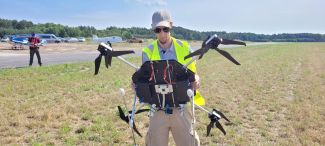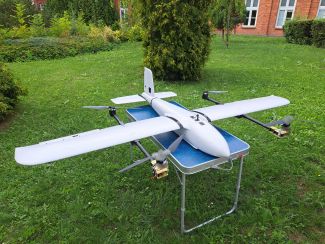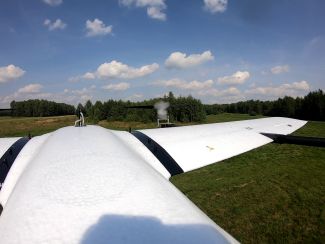What types of drones are used today and for what purposes?
The drone market is very broad. When it comes to fields of application, they range from purely recreational, filming, surveying, rescue, transport, to combat drones used in the army. Although the applications are numerous, the same designs can be seen in each category. There are multicopters, airframes, helicopters and mixtures of these designs such as vertical take-off and landing (VTOL) airframes.
What solutions are you working on?
I am currently conducting research as part of my PhD on the mechanisation of propeller blades for drones. The idea of blade mechanisation is not new, as it originated before the start of the Second World War, but until now it has not been applied to drones due to the complexity of construction and the necessary miniaturisation. This is a natural path for the development of propeller drives, in the development of which the doctoral thesis I am writing will hopefully pave the way for commercial solutions. The use of this type of propeller is possible in virtually any propulsion system, so the possibilities of using this invention are very wide. However, the greatest benefits of this propulsion system will be for VTOL drones.
How are vertical take-off and landing drones different from others?
As the name suggests, VTOLs can lift off and land vertically, so a small take-off area is required. Another major advantage is that they can fly much greater distances due to their wings. These save the energy cost of displacement and allow higher speeds. The use of propeller blade mechanisation in this type of craft would allow for an even greater increase in flight speed and a reduction in the energy required to maintain it.
Robotics is a practical discipline. How does your research look like?
The work I do is very varied - from purely workshop work, where I have my hands smeared in grease up to my elbows, to doing research and experiments and, of course, flying, programming, to the much less passionate writing of reports, reports, research papers and attending mandatory classes. Throughout the time I have been working on the subject, which is about (5 years) I have produced many prototypes as of today the last one is number 8 and number 9 is in production. Over the next 3 years of my PhD I estimate there will still be versions 10, 11 and maybe 12.
When was your passion for robotics born?
I've had the DIY instinct practically since I was a little boy and as a result, I already knew at the beginning of high school that robotics was my area of interest. I owe my passion for aviation and modelling to my physics teacher, Professor Henryk Czekalski, who introduced me to the secrets of aviation at an aviation camp. Since then, I have been trying to translate my passion into a profession.
Agnieszka Garcarek-Sikorska




